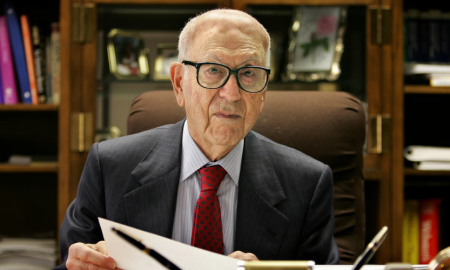
Clever Strategies to Help Boost Your Productivity at Work

It isn’t uncommon to find people desperately wishing that they had more working hours to get things done. In fact, recent research revealed that the average worker could remain productive for just 2 hours and 53 minutes of eight working hours. Different sources have, however, revealed that the solution to being more productive isn’t working harder, rather, it is working smarter.

The solution to being more productive is working smarter and not just working harder.
How then can you work smarter?
There are four fundamental strategies that could help you boost your daily productivity. Please note that these are not magic strategies to make your work “disappear.” The strategies will only help you in making more productive use of your time.
1. Maintain a realistic to-do list
Writing out all you need to get done in a day is one effective way to keep track of both your short and long-term goals. However, more important than keeping a to-do list is keeping the list filled with realistic goals.
It is advisable that you break down your to-do-list based on the duration of each task and goal. Do not include tasks you have no intention of doing. Break down those tasks that appear complex into achievable steps and maintain consistency in carrying out the tasks. You can make your list on a paper or utilize any of the several to-do-lists apps available online. Keep checking off each task you get done as this helps you keep track of your progress
2. Set your priorities right
Once you have created your to-do list, it might seem more enticing to handle the easier tasks and leave the tougher and demanding ones for a later period. However, this often breeds procrastination,and you should, therefore, prioritize tasks based on importance and not ease. If the easiest tasks are the most important ones that require urgent attention, then do them first. However, if the tougher ones are more important, then you should attend to those tasks first.

Prioritize your tasks based on importance and not how easy they are
You can use the Pareto Principle, popularly referred to as the 80/20 rule to prioritize. This rule states that 80% of the results gotten is derived from 20% of the work done. This rule will help you determine the 20% that should take priority on your list.
Another method for prioritizing tasks is the ABCDE technique made popular by Brian Tracy. The method helps you prioritize based on how urgent a task is. A stands for very important tasks, B is for important tasks, C is for tasks that are nice to accomplish, but not as urgent and important as the former two, D is for tasks that can be delegated and E is for tasks to be eliminated from the list.
3. Take one task at a time
Multitasking eats at your productivity. Although some business owners believe that multitasking is a recipe for success, studies have continued to show how wrong this pattern of thought is. Studies have shown that trying to work on the different task at ones often led to an inability to complete any of the tasks due to divided attention.
A neuroscience professor at MIT, Earl Miller stated that humans cannout multitask. Miller further added that people attained more efficiency when they focused on one task at a time as it fostered creative thinking devoid of distractions.
Social media and emails have been pointed as major distractions. It has been advised that one should fix a specific time for responding to emails if possible, rather than responding to your email every second. If you want to stay off social media, there are different social media blocker tools such as OFFTIME, Forrest, among others that you can try out.
4. Go on breaks at regular intervals
According to research, it is in the human nature to get distracted while trying to maintain. Thus, do not think you are the only one who gets distracted. It is advised that you take breaks at different points during your work hours to rest and “get distracted.”

Research has revealed that it is in the human nature to get distracted while trying to focus and concentrate
Consider using the Pomodoro technique which suggests that for every 25 minutes of intense focus, you give yourself five minutes of break. Thus, after about four 25 minutes work periods called pomodoros, take a break of 20 minutes before you get back to work.
Instead of the Pomdoro technique, you can also take a break between 10 to 20 minutes after every 90 minutes of intense focus. Tony Schwartz noted that science has revealed that 90 minutes is the maximum amount of time an average human can remain focused before the law of diminishing return occurs.
In conclusion, getting more productive at work isn’t about working for a longer period, but about maximizing your working hours.
Thus, by using to-do lists, determining the tasks to prioritize, focusing on one task at a time, and taking breaks at interval, you are maximizing your work hours, and changes will soon begin to occur
More in Advisor
-
`
Will Bitcoin Crash to $0 or Hit $500K in a Decade?
Bitcoin’s future divides analysts into two extreme camps. Some see it becoming one of the most valuable financial assets in history....
October 12, 2025 -
`
Can Anyone Really Blame Mariah Carey for ‘Leaving’ the Real World?
Mariah Carey isn’t like the rest of us. From the moment she opens her mouth and that voice pours out, she...
October 10, 2025 -
`
Intel Invests in Nvidia, but Ratings Remain Unchanged
Intel’s stock jumped more than 30% after news broke that Nvidia poured $5 billion into the company. The rally sparked renewed...
October 5, 2025 -
`
Homeownership vs. Real Estate Investment: What’s Better?
Homeownership has long been seen as the American dream. But today, more people are asking: Is it really the smartest way...
October 3, 2025 -
`
Why the Armani Fashion Empire Is Set for an IPO
Giorgio Armani, one of the most iconic names in global fashion, left behind a detailed plan for the future of his...
September 27, 2025 -
`
Why Do Pokémon Cards Outperform the S&P 500 As an Investment?
Pokémon cards have outperformed the stock market by a mile. Since 2004, they have delivered a staggering 3,821% return, according to...
September 27, 2025 -
`
America’s Billionaires Get Older—Millennials Wait for Wealth Transfer
Many of today’s billionaires don’t match the youthful tech-founder image often portrayed. While names like Elon Musk, Sam Altman, and Mark...
September 21, 2025 -
`
Can President Trump Legally Fire Fed Governor Lisa Cook?
Lisa Cook is right in the middle of one of the most explosive legal battles in Washington. President Trump wants her...
September 20, 2025 -
`
Jeff Bezos’ Advice for Millennials Who Want Financial Success
Millennials today have grown up in a world where instant access to products and services is the norm. From two-day deliveries...
September 13, 2025















You must be logged in to post a comment Login